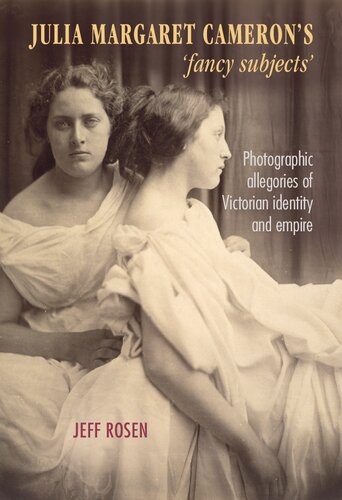

Most ebook files are in PDF format, so you can easily read them using various software such as Foxit Reader or directly on the Google Chrome browser.
Some ebook files are released by publishers in other formats such as .awz, .mobi, .epub, .fb2, etc. You may need to install specific software to read these formats on mobile/PC, such as Calibre.
Please read the tutorial at this link: https://ebookbell.com/faq
We offer FREE conversion to the popular formats you request; however, this may take some time. Therefore, right after payment, please email us, and we will try to provide the service as quickly as possible.
For some exceptional file formats or broken links (if any), please refrain from opening any disputes. Instead, email us first, and we will try to assist within a maximum of 6 hours.
EbookBell Team

5.0
50 reviewsJulia Margaret Cameron's 'fancy subjects' is the first study of Cameron's allegorical photographs and the first to examine the intellectual connections of this imagery to British culture and politics of the 1860s and 1870s. In these photographs, Cameron depicted passages from classical mythology, the Old and New Testament, and historical and contemporary literature. She costumed her friends, domestic help, and village children in dramatic poses, turning them into goddesses and nymphs, biblical kings and medieval knights; she photographed young women in the style of the Elgin marbles, making sculpture come alive, and re-imagined scenes depicted in the poetry of Byron and Tennyson.
Cameron chose allegory as her primary artistic device because it allowed her to use popular iconography to convey a latent or secondary meaning. In her photographs, a primary meaning is first conveyed by the title of the image; then, social and political ideas that the artist implanted in the image begin to emerge, contributing to and commenting on the contemporary cultural, religious and political debates of the time. Cameron used the term 'fancy subjects' to embed these moral, intellectual and political narratives in her photographs. This book reconnects her to the prominent minds in her circle who influenced her thinking, including Benjamin Jowett, George Grote and Henry Taylor, and demonstrates her awareness and responsiveness to popular graphic art, including textiles and wall paper, book illustrations and engravings from period folios, cartoons from Punch and line drawings from the Illustrated London News, cabinet photographs and autotype prints.